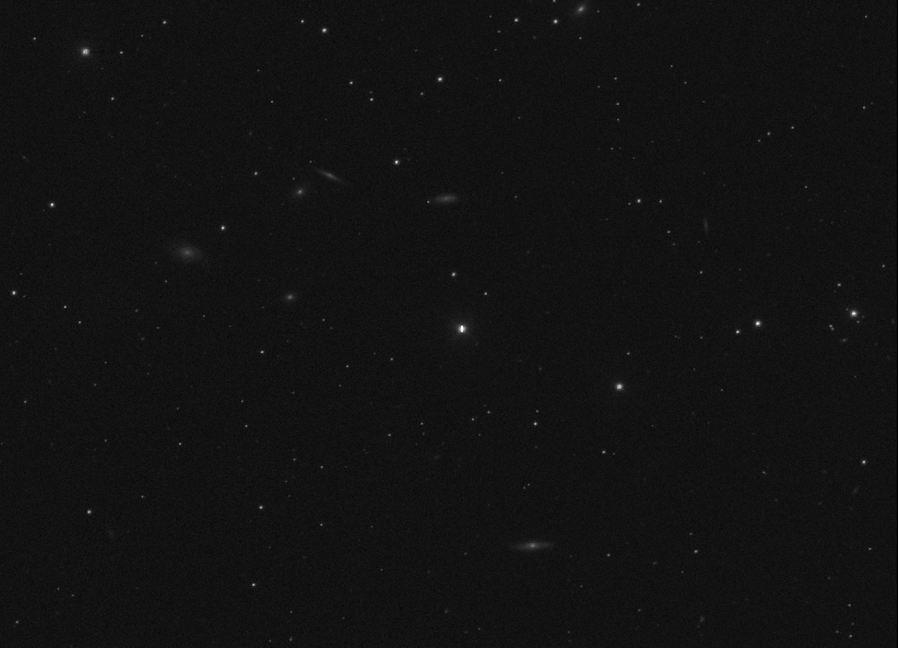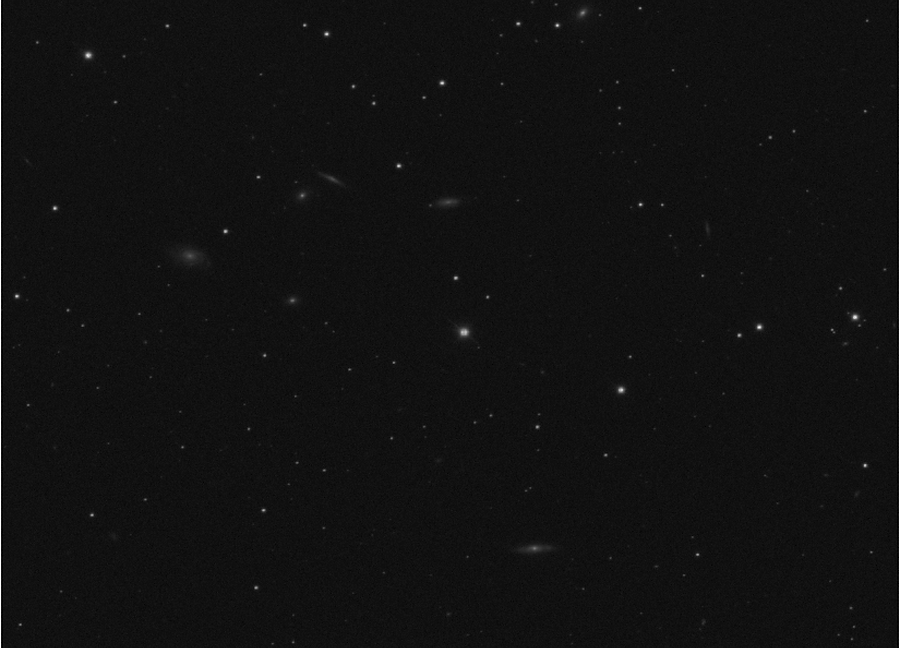We knew the distance to the galaxies that we had collected, and that the the SDSS camera takes pictures with an angle of 0.396127 arcseconds per pixel. Due to technical limitations in the particle system we used in After Effects, our entire universe had a radius of 100,000 pixels. So we used these values to scale all of our cutouts correctly. A 200,000 pixel-wide universe might sound big, but the furthest galaxy we have images is nearly 8 billion light years away, so 1 pixel represents 78,000 light years! At this scale, most of our cutouts were scaled down to a single pixel or smaller. Fortunately, After Effects can handle particles of this size without losing any visual clarity.
The most terrifying part of the process was not knowing whether this setup would even work with the number of images we had. I had developed the scripts to do the math and create the objects in After Effects on a PC with a reasonably fast processor and 8 GB of memory, which was fast enough for working with subsets of the data, but I wasn’t able to load our entire universe model at once. There was always a possibility that After Effects simply couldn’t handle all of the data even on Stephen’s render machines with big SSD drives and 64 GB of memory, and we would have to go back to the drawing board.
After a bit of tweaking, and a lot of patience, we were finally able to get the first, most complicated scene to load. It takes nearly an entire day to open up the After Effects project, and hours to render a preview frame every time we needed to move the camera, which made actually setting up the shot nearly impossible. To get around this, we build a stripped down version that contained only 5% of the images, chosen at random, to give us a project that we could use to set up the camera movements for the shot while still allowing us to see where the rest of the galaxies would be placed.
Once the camera was set up, we started the renders. Each frame of the 40 second scene took nearly 24 hours to render. The render process finished up in just over half of a month, but it took a combined 5.5 machine years of rendering time across approximately 50 computers, more than half of those provided by volunteers! Finally, we could see what over 3 years of work could create!
Needless to say, we were ecstatic with how the first shot turned out. 5 million galaxies sounds like a big number, but until you see it on screen you don’t realize just how large that really is. On a big screen it’s especially overwhelming, but just imagine how this will look on an IMAX screen up to eight stories tall!
Now that the first, most difficult render is complete, we’re churning away on the rest of the renders. Since the universe is expanding while we’re flying through each shot, galaxies are moving from the foreground particles into the static background layers, which makes each render easier as we go.
It’s been a crazy ride getting to this point, but it’s been fun looking back at this section of the film now that it’s finally almost complete. I’m extremely proud of the work our team has done to bring these scenes to life. If someone had told me how much work these few minutes of film was going to require when I first started this project, I probably wouldn’t have believed them. It turns out that creating a realistic three-dimensional photographic model of the entire universe with 5 million images is a bit harder than I had originally thought!
- Bill Eberly


